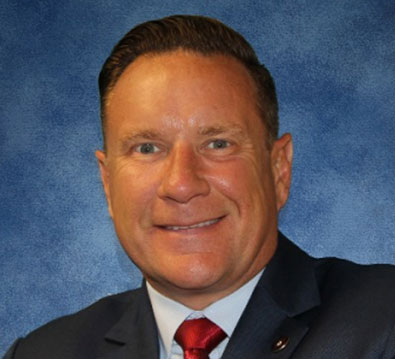 Paul Mattear, head of global satcom, Amazon Web Services. (Source: AWS)
Paul Mattear, head of global satcom, Amazon Web Services. (Source: AWS)
PARIS — The U.S. Department of Defense, whose Space Development Agency has already forced a de facto common technical standard on optical satellite transmissions, may be able to accomplish the same feat with interoperability among satellite broadband systems in geostationary and non-geostationary orbit, the head of Amazon Web Services’ global satcom division said.
Paul Mattear also said the DoD’s recent solicitations will also assure that geostationary-orbit satellites, whose relevance is under question in some markets, will remain viable to offer network resilience.
“DoD has a multitude of problems, but their request for a multi-orbit solution is one of the great things they are doing right now, and that is a continuation of GEO remaining a central point for a solution,” Mattear said in a Jan. 16 panel discussion at the PTC-23 conference.
Amazon’s $10-billion Project Kuiper, a constellation of 3,236 broadband satellites in low Earth orbit, is not part of AWS. But Mattear conceded that, given his title and background, “I go into most meetings and people say, ‘Hi Paul, glad to see you: Kuiper.’” Mattear’s background includes positions at broadband antenna developer Kymeta Corp. and satellite fleet operator Intelsat and it’s government services division, Intelsat General.
Kuiper has scheduled to launch of two small demonstration satellites this year, and has purchased 80 heavy-lift launch vehicles that, according to the current schedule, will allow Kuiper to start offering commercial service in 2026.
The satellite sector, despite its relatively small size relative to mobile wireless networks, has been reluctant to adopt common standards to allow interoperability between different systems.
Part of this is that each satellite broadband company, whether terminal builder or satellite operator, wants to preserve its customer base.
 Jeremy Rose. (Source: Comsys)
Jeremy Rose. (Source: Comsys)
Jeremy Rose, a partner in the satellite consultancy Comsys LLP of Britain, said the satellite sector’s small size is partly due to the fact that the terrestrial wireless industry has used its influence to present satellite communications from making market inroads.
“The GSMA [terrestrial wireless industry organization] has 800 people, and the Global VSAT Forum has three,” Rose said. “We are a nice of a niche. If we had people selling 10 million VSATS [satellite user terminals] we could get to a point where we could have a standard.”
No one would dispute that, but it’s also true that protecting even a small turf has been a characteristic of satellite operators and terminal builders.
“If I take a satellite terminal from one GEO provider and go somewhere else, it’s not going to work,” Mattear said. “Satellite operators don’t play well together. We as an industry haven’t made it easy for our customers. Maybe if we had looked at it from a consumer standpoint, we wouldn’t have gotten so wrapped up in tribalism.”
Can DoD help save the industry from itself? The U.S. Space Development Agency (SDA) has become the de facto standard setter because it is contracting for multiple constellations of low-orbiting satellites, from multiple vendors, and asking that their optical communications terminals be interoperable with other SDA contractors’ hardware.
The lack of a common standard, and the penalty for making the wrong choice of standards, has been a headwind to the development of the optical satellite communications sector.
Mattear said a larger-scale effect may occur with DoD’s future orders for satellite constellations, for the same reason: When you’re ordering more than everyone else, you can impose a technical solution that can be adopted by the wider industry, in this case the commercial sector.
‘DoD waves the big check and says: Do this. And somebody will do that’
“What will happen is that certain parts will become interoperable,” Mattear said. “Having the interoperable capability built into contracts is what forces that function. They have the money, the big check, to say: Do this. Then somebody will do that.
“They are already talking about multi-orbit and multi-band as the next requirement for contracting. So it’s going to happen because of DoD,” Mattear said.
The Defense Department also has the ability to maintain infrastructure even when it is used too infrequently to make commercial sense. Over time, the prices come down and what was intermittent capability becomes commercially viable.
“This will be very expensive at first, because it’s the DoD,” Mattear said. “Then it becomes less expensive as it becomes commercialized. Somebody figures out a way to do this in the cloud and it becomes really inexpensive at that point.
He cited the example of satellite infrastructure being deployed in regions ravaged by natural disasters that disable terrestrial communications. The affected areas are rebuilt, the terrestrial infrastructure repaired and the satellite solution leaves before it can prove long-term value.
“Nobody but the DoD pays for something they are not going to use,” Mattear said.
Read more from Space Intel Report.
